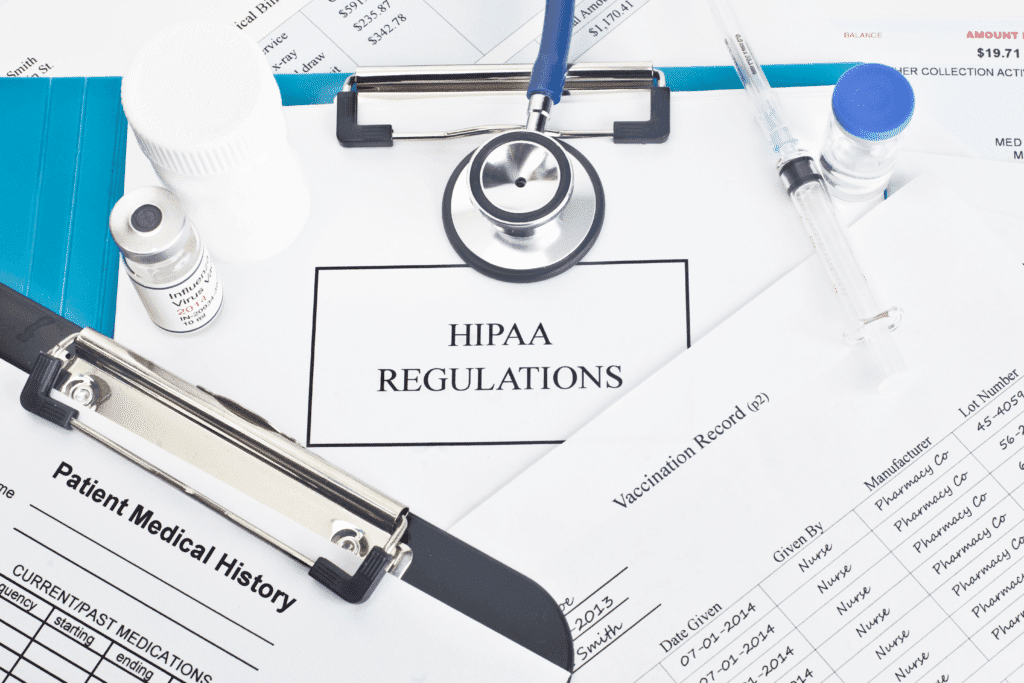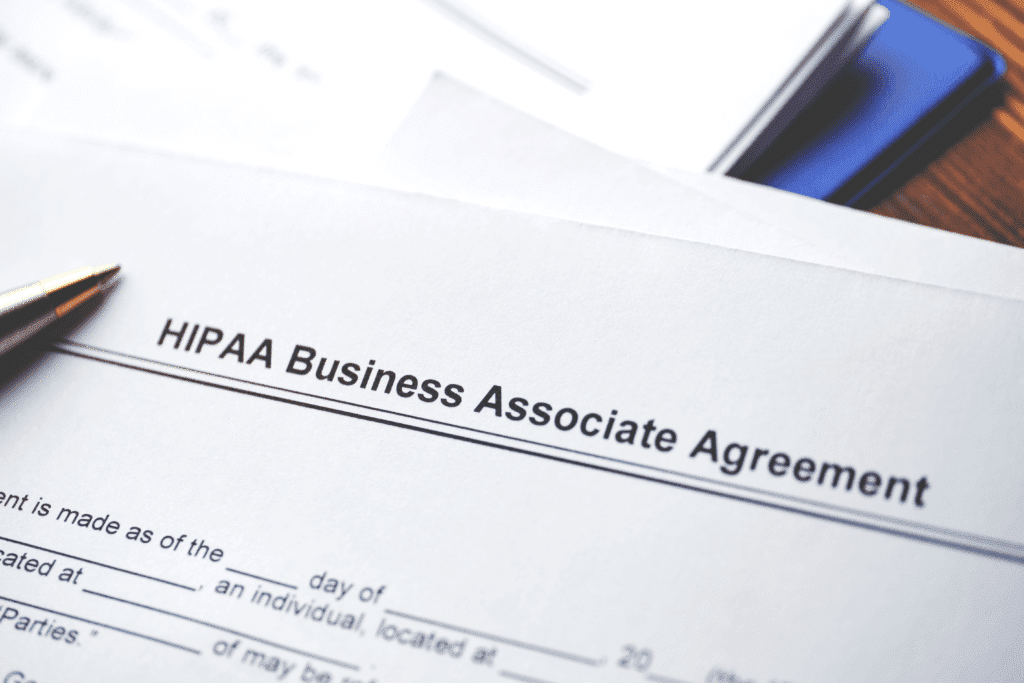HIPAA-compliant IT Services: Ensuring Data Security and Compliance
When it comes to health care, the privacy and security of patient information are top priorities. HIPAA-compliant IT services ensure that sensitive health data is handled in a secure manner, meeting all legal requirements. These services are essential for healthcare providers, payers, and other entities that handle protected health information (PHI).
Adhering to the Health Insurance Portability and Accountability Act (HIPAA) isn’t just about compliance; it’s about maintaining trust and protecting patient data. Companies like Amazon Web Services (AWS) offer HIPAA-compliant cloud services, which allow healthcare entities to securely store, process, and transmit PHI. These solutions include thorough risk assessments, data encryption, and strong access controls.
To stay compliant, healthcare organizations must regularly evaluate their IT infrastructure and implement necessary safeguards. This involves both administrative measures and technical solutions, ensuring that all systems are secure against breaches. Understanding and implementing these elements can help organizations protect patient data and avoid significant penalties.
Key Takeaways
- HIPAA-compliant IT services secure sensitive health data.
- Regular evaluations and safeguards are crucial for compliance.
- Cloud providers like AWS offer secure solutions for PHI.

Understanding HIPAA and its Objectives
The Health Insurance Portability and Accountability Act (HIPAA) is designed to secure patient data and ensure privacy. Key components include the Privacy Rule, the Security Rule, and the Breach Notification Rule. Compliance is crucial to protect sensitive health information and to maintain trust.
Key Components of HIPAA
HIPAA consists of several important rules and regulations. The Privacy Rule safeguards personal health information, ensuring that it is not disclosed without patient consent. The Security Rule sets standards for protecting electronic protected health information (ePHI) by implementing administrative, physical, and technical safeguards.
Another critical aspect is the Breach Notification Rule, which mandates that covered entities and business associates notify individuals when their PHI has been compromised. The HITECH Act strengthens HIPAA rules by enhancing penalties for non-compliance and promoting the use of electronic health records.
The Importance of Compliance
Compliance with HIPAA is essential for protecting patient privacy and maintaining the integrity of healthcare providers. It helps in avoiding significant fines and legal consequences. Healthcare providers and business associates must adopt practices that ensure the confidentiality, integrity, and availability of PHI.
Compliance also builds patient trust, as it assures them that their sensitive information is handled with care. Furthermore, following HIPAA guidelines can streamline processes and improve the overall security posture of an organization. Failure to comply can result in penalties, reputational damage, and loss of patient trust.
Protected Health Information (PHI)
Protected Health Information (PHI) refers to any information about health status, provision of healthcare, or payment for healthcare that can be linked to an individual. HIPAA protects PHI whether it is in electronic, paper, or oral form. This includes common identifiers like name, address, birth date, and Social Security Number.
Each entity that handles PHI, known as covered entities and their business associates, must follow strict guidelines to ensure its protection. Safeguards include data encryption, access controls, and audit trails to track how information is used and by whom. Proper handling of PHI is vital to prevent data breaches and maintain patient confidentiality.
These aspects of HIPAA are critical in shaping how sensitive health information is managed within the healthcare industry.

Legal Requirements for HIPAA IT Compliance
To meet the legal requirements for HIPAA IT Compliance, organizations must adhere to key regulations regarding the protection of electronic protected health information (e-PHI). These regulations address privacy, security, and breach notification standards.
The HIPAA Privacy Rule
The HIPAA Privacy Rule sets standards for protecting certain health information. It applies to health care providers, health plans, and health care clearinghouses. These entities must maintain the confidentiality of patient data and protect it from unauthorized access.
Covered entities must implement policies to limit unnecessary disclosures of e-PHI. They must also provide patients with rights regarding their health information, including the ability to access and amend their records. A penalty will not be imposed for violations under specific circumstances, such as if the entity corrects the failure within a 30-day period.
The HIPAA Security Rule
The HIPAA Security Rule focuses on protecting e-PHI through administrative, physical, and technical safeguards. It mandates that covered entities ensure the confidentiality, integrity, and availability of e-PHI. This includes measures like access controls, authentication processes, and encryption.
Entities must conduct a risk analysis to identify potential vulnerabilities and implement risk management strategies. Regular evaluations are also required to adapt to new threats and technological changes. Detailed information about the Security Rule can be found on the Health and Human Services (HHS) website.
The HITECH Act and Breach Notification
The HITECH Act introduced additional requirements for HIPAA compliance, particularly around breach notification. Entities must notify affected individuals, the HHS, and sometimes the media, of breaches involving unsecured e-PHI. The notification must be made without unreasonable delay and within 60 days of discovering the breach.
The HITECH Act also increased penalties for non-compliance. This encourages stricter adherence to HIPAA regulations. Compliance with the Breach Notification Rule helps ensure that patients are informed promptly about risks to their personal information.

Evaluating and Ensuring HIPAA Compliance
Effective HIPAA compliance involves thorough risk analysis, solid business associate agreements, and prompt incident response and reporting. Ensuring these areas are meticulously managed helps safeguard sensitive health information.
Risk Analysis and Management
Risk analysis is a critical step in HIPAA compliance. Covered health care providers must conduct regular risk assessments to identify and evaluate potential vulnerabilities in their IT systems.
This involves analyzing potential threats to e-PHI (electronic protected health information), assessing the impact of these threats, and developing strategies to mitigate identified risks. The process should be well-documented and updated periodically to address any new threats or changes in the environment. Noncompliance can result in significant penalties and data breaches, as regulatory bodies like HITRUST provide guidance to ensure standards are met.
Business Associate Agreements (BAAs)
Business Associate Agreements (BAAs) are essential for ensuring HIPAA compliance when working with third parties. Covered entities must have BAAs with any business associates (BAs) that have access to e-PHI.
These agreements stipulate that BAs will comply with HIPAA rules and protect the confidentiality, integrity, and availability of e-PHI. BAAs must outline the permitted uses and disclosures of e-PHI by the BA, require them to implement safeguards, and include terms for breach notification. Failure to secure proper BAAs can lead to regulatory compliance issues and significant financial penalties.
Incident Response and Reporting
Effective incident response and reporting mechanisms are crucial to managing HIPAA compliance. When a breach occurs, covered entities must act swiftly to contain and mitigate the impact.
They must establish clear procedures for detecting, investigating, and documenting incidents. Once an incident is identified, it must be reported to the appropriate authorities and affected individuals in a timely manner. HIPAA regulations require entities to notify the Office for Civil Rights (OCR) of breaches affecting over 500 individuals within 60 days of discovery. Efficient breach notification processes help reduce the consequences of noncompliance and maintain regulatory adherence.
In summary, regular risk analysis, strong BAAs, and robust incident response plans are essential for maintaining HIPAA compliance.

Technical Safeguards and HIPAA Compliant IT Solutions
Technical safeguards play a crucial role in ensuring that electronic protected health information (ePHI) is secure. These safeguards include measures like cloud computing, encryption, and efficient data backup strategies.
Cloud Computing and HIPAA
Cloud services, such as Azure Government, AWS, and Office 365, are integral to modern health IT solutions. When using cloud computing to manage ePHI, selecting a HIPAA-compliant cloud service provider (CSP) is essential. HIPAA eligible services ensure that cloud platforms meet the required security standards.
Cloud providers must sign a Business Associate Agreement (BAA) to commit to maintaining HIPAA compliance. For example, Amazon EC2 and other services under AWS offer robust security features aligned with HIPAA regulations. These features include data encryption, controlled access, and auditing capabilities.
Office 365, used commonly in healthcare, includes HIPAA-specific settings across email and document management systems. Organizations must configure these settings correctly to ensure compliance.
Encryption and Access Control
Encryption and access control are vital components of HIPAA-compliant IT solutions. Encryption ensures that ePHI is unreadable to unauthorized users, both in transit and at rest. Common standards include NIST guidelines and ISO/IEC 27001, which provide frameworks for implementing secure encryption practices.
Azure and AWS both offer encryption services. For instance, AWS Key Management Service (KMS) allows users to create and manage cryptographic keys. Similarly, Azure provides various encryption solutions, including Azure Disk Encryption and Azure Key Vault.
Access control involves restricting ePHI access to authorized individuals only. Measures such as multi-factor authentication (MFA) and role-based access controls (RBAC) are essential. These measures help limit access to sensitive data based on user roles and responsibilities, adding an additional layer of security.
Data Backup and Disaster Recovery
Data backup and disaster recovery are critical for protecting ePHI. Regular backups ensure that data can be restored in case of loss or corruption. A solid disaster recovery plan helps organizations quickly resume operations after a cyberattack or natural disaster.
Azure, AWS, and other CSPs offer tools for efficient data backup and recovery. For instance, AWS Backup provides centralized backup management, ensuring regular data backups. Azure Site Recovery allows for business continuity by replicating workloads across Azure regions.
Using SaaS solutions like Office 365 requires regular backup plans to protect email and document data. These plans should align with the organization’s overall disaster recovery strategy. Regular testing of the disaster recovery plan ensures that backups are effective and that systems can be restored promptly.

Adapting to Technological Innovations and Remote Care Trends
As healthcare continues to evolve, there is a significant shift towards adopting technological innovations and remote care. These changes necessitate a focus on maintaining HIPAA compliance while leveraging new tools and methods.
Telehealth Services and HIPAA
Telehealth services have become a critical component of modern healthcare, especially in light of recent global events. With the rise of telehealth services, there is an increased need to ensure that all communications remain HIPAA-compliant.
Secure video conferencing platforms and remote consultation tools must be integrated with Electronic Health Records (EHRs) to provide seamless and secure healthcare delivery. Compliance is ensured by adopting end-to-end encryption and implementing robust authentication mechanisms. These measures help protect patient data during remote consultations and data transfers.
Microsoft and other tech giants are providing solutions that align with HIPAA requirements. These platforms often support cloud computing, enhancing the scalability and flexibility necessary for expanding telehealth services. Such improvements not only enhance service delivery but also safeguard sensitive health information.
The Impact of Emerging Technologies
Emerging technologies are reshaping the healthcare landscape by introducing new ways to manage and protect patient information. Remote communication technologies are key to this transformation, allowing healthcare providers to offer services beyond traditional settings.
Cloud computing plays a significant role by offering scalable and flexible solutions for data storage and management. Health organizations are increasingly turning to services compliant with Federal Risk and Authorization Management Program (FedRAMP) standards, ensuring high levels of security and compliance with HIPAA.
Furthermore, innovations in data analytics and artificial intelligence (AI) help in monitoring compliance and detecting anomalies. These tools enable more efficient data management and enhance the ability to safeguard patient records. Adapting to these technological advances is crucial for maintaining the integrity and confidentiality of health information in an increasingly digital world.

Frequently Asked Questions
HIPAA compliance for IT services requires meeting specific standards. This includes ensuring secure cloud storage solutions, configuring services correctly, and maintaining compliance through continuous efforts.
What are the requirements for IT services to be considered HIPAA compliant?
IT services must protect patient data. This involves encryption, access controls, and regular monitoring. Companies need to have policies in place for data breaches and ensure staff are trained in compliance standards.
Which cloud storage solutions are recognized as the best for HIPAA compliance?
AWS and Google Cloud Platform (GCP) are popular choices. They offer features such as encryption and access controls, important for HIPAA compliance. Both platforms sign Business Associate Agreements (BAAs) with customers.
Are there specific criteria for software products to meet HIPAA compliance standards?
Yes, software products should have encryption, user authentication, and audit controls. They need to follow the Privacy Rule and Security Rule. Companies must ensure their software is updated regularly to protect against new threats.
How can one ensure that their AWS service configuration aligns with HIPAA compliance requirements?
AWS provides a compliance guide. Users should enable logging, use encryption, and apply role-based access controls. Regular audits and reviews of configurations are essential.
What steps must IT companies take to maintain HIPAA compliance?
Companies need continuous monitoring and auditing of their systems. Training employees on HIPAA rules is crucial. They must regularly review and update their security policies to address any gaps or vulnerabilities.
Is Google Cloud Platform suitable for hosting HIPAA-compliant applications?
Yes, Google Cloud Platform supports HIPAA compliance. GCP offers features like data encryption and access controls. They also sign BAAs, which is necessary for handling protected health information (PHI).
Related Posts

Top 5 Office 365 Apps You’re Overlooking That Could Save You Money
Office 365’s advanced applications offer viable alternatives to expensive third-party software, helping organizations reduce annual subscription costs by thousands of dollars. I’ve found that native

Affordable Managed IT Services: Enhancing Business Efficiency
Affordable Managed IT Services: Enhancing Business Efficiency Finding affordable managed IT services can be a game-changer for small businesses. These services offer vital support in cybersecurity, network

Exploring the Advantages of Cloud Computing for SMBs
Small and medium-sized businesses can now harness powerful enterprise tools and resources through cloud computing services. Research shows 65% of SMBs already rely on cloud
